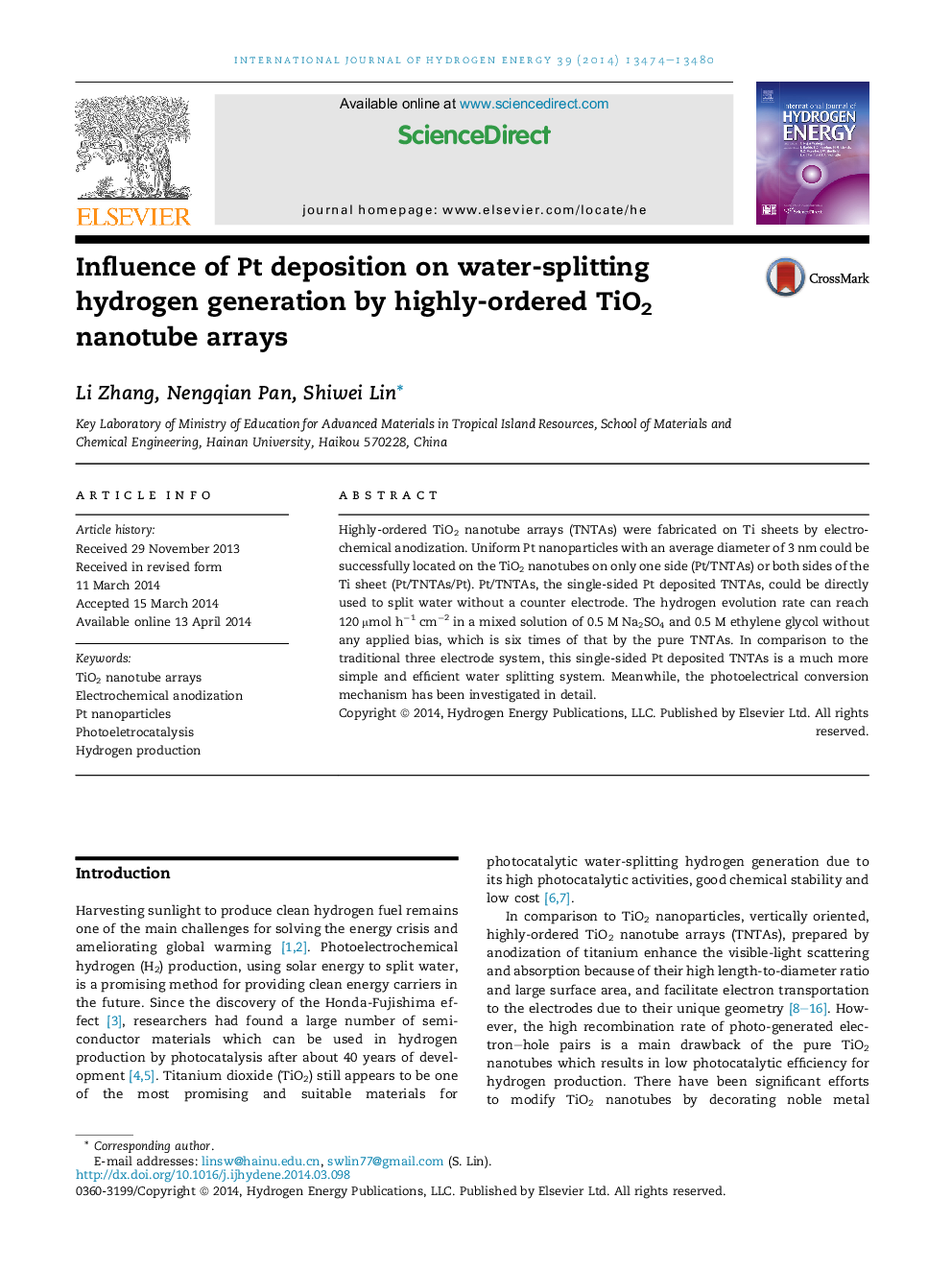| Article ID | Journal | Published Year | Pages | File Type |
|---|---|---|---|---|
| 1272642 | International Journal of Hydrogen Energy | 2014 | 7 Pages |
•Pt nanoparticles have been evenly distributed on highly-ordered TiO2 nanotube arrays.•The transfer mechanism of the photogenerated electrons has been discussed in detail.•Pt deposition on TNTAs facilitates the separation of the photogenerated e-h pairs.•The hydrogen evolution rate of Pt/TNTAs was 6 times of that of the pure TNTAs.•Pt/TNTAs integrate the photoanode and photocathode on one Ti sheet.
Highly-ordered TiO2 nanotube arrays (TNTAs) were fabricated on Ti sheets by electrochemical anodization. Uniform Pt nanoparticles with an average diameter of 3 nm could be successfully located on the TiO2 nanotubes on only one side (Pt/TNTAs) or both sides of the Ti sheet (Pt/TNTAs/Pt). Pt/TNTAs, the single-sided Pt deposited TNTAs, could be directly used to split water without a counter electrode. The hydrogen evolution rate can reach 120 μmol h−1 cm−2 in a mixed solution of 0.5 M Na2SO4 and 0.5 M ethylene glycol without any applied bias, which is six times of that by the pure TNTAs. In comparison to the traditional three electrode system, this single-sided Pt deposited TNTAs is a much more simple and efficient water splitting system. Meanwhile, the photoelectrical conversion mechanism has been investigated in detail.
